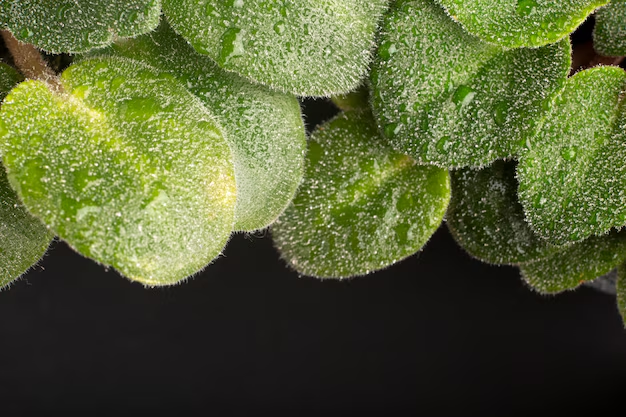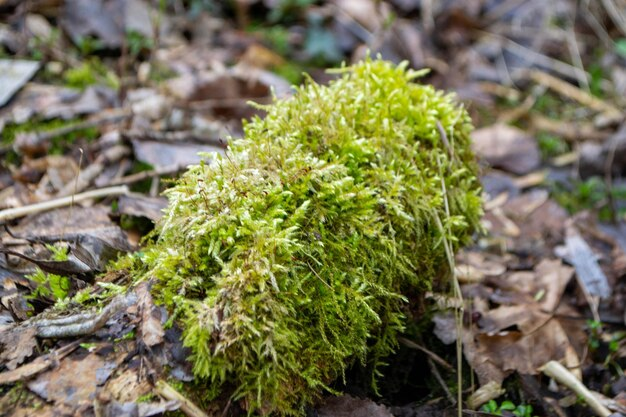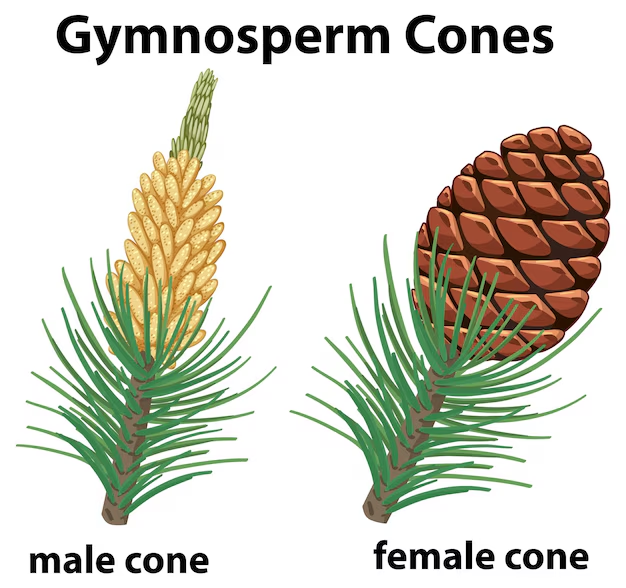Major Groups of the Plant Kingdom with Examples
Understanding the Plant Kingdom, also known as Kingdom Plantae, is fundamental in biology. Kingdom Plantae encompasses all plants, which are essential for life on Earth due to their ability to produce oxygen and serve as the base of food chains. In this guide, we will learn about the characteristics, classification, and various members of the plant kingdom, providing a comprehensive overview suitable for all grade students.
Also Read: Origin of Life on Earth
Characteristics of Kingdom Plantae
Plants belonging to the Plant Kingdom exhibit several distinct characteristics:
Eukaryotic and Multicellular: Members of Kingdom Plantae are eukaryotic organisms with complex, multicellular structures.
Autotrophic Nutrition: Plants are autotrophs, meaning they produce their food through the process of photosynthesis, using chlorophyll pigments in their chloroplasts.
Cellular Structure: Plant cells have a rigid cell wall made of cellulose, a large central vacuole for storage, and various organelles for specific functions such as support, reproduction, and photosynthesis.
Non-Motile: Unlike animals, plants are generally non-motile and remain anchored to one place.
Reproduction: Plants can reproduce both asexually (through methods like vegetative propagation) and sexually (via the production of seeds and flowers).
Differentiated Organs: Most plants have well-differentiated organs such as roots, stems, and leaves, each performing specific functions.
Vascular System: Many plants possess a vascular system comprising phloem and xylem for the transportation of water, nutrients, and food.
Also Read: Kingdom Animalia, Plants, and Virus
Classification of Kingdom Plantae
The classification of Kingdom Plantae is based on several criteria, including plant body structure, the presence of a vascular system, and seed formation. Below is a detailed classification chart with examples:
Plant Kingdom Classification Criteria
Plant Body: Presence or absence of a well-differentiated plant body with roots, stems, and leaves.
Vascular System: Presence or absence of specialised tissues (phloem and xylem) for transporting water and nutrients.
Seed Formation: Presence or absence of seeds and flowers, and whether seeds are naked or enclosed within fruits.
Also Read: Xylem and Phloem
Five Major Subgroups of Kingdom Plantae
1. Thallophyta

Description: Thallophytes have a simple, undifferentiated body structure known as a thallus. They lack true roots, stems, and leaves.
Examples: Green algae (e.g., Volvox), red algae (e.g., Polysiphonia), and brown algae (e.g., Fucus).
2. Bryophyta

Description: Bryophytes are non-vascular plants that do not have a true vascular system. They possess root-like, stem-like, and leaf-like structures but require water for reproduction.
Examples: Mosses (Funaria), hornworts (Antheoceros), and liverworts (Marchantia).
3. Pteridophyta

Description: Pteridophytes are vascular plants with well-differentiated organs. They reproduce via spores and do not produce seeds.
Examples: Ferns (Pteris), clubmosses (Selaginella), and horsetails (Equisetum).
4. Gymnosperms

Description: Gymnosperms are seed-bearing vascular plants with naked seeds not enclosed within fruits. They have a well-developed vascular system and differentiated plant body.
Examples: Pine trees (Pinus), cycads (Cycas), and ginkgo (Ginkgo biloba).
5. Angiosperms

Description: Angiosperms are the most advanced group of plants, characterised by flowers and fruits that enclose seeds. They have a highly developed vascular system and diverse plant forms.
Examples: Mango trees (Mangifera indica), roses (Rosa), wheat (Triticum), and orchids (Orchidaceae).
Learn More: Seed Formation
Plant Kingdom Classification Chart
Cryptogams and Phanerogams
Kingdom Plantae is also categorised into two broad groups based on reproductive features:
Cryptogams:
Description: These are non-flowering, non-seed-bearing plants. They reproduce via spores.
Includes: Thallophyta, Bryophyta, and Pteridophyta.
Phanerogams:
Description: These are flowering, seed-bearing plants. They reproduce through seeds and flowers.
Includes: Gymnosperms and Angiosperms.
Unique Features of Kingdom Plantae
Beyond the standard classification and characteristics, Kingdom Plantae exhibits unique adaptations that allow plants to thrive in diverse environments:
Adaptations to Terrestrial Life: Plants have developed structures like cuticles and stomata to reduce water loss and facilitate gas exchange.
Reproductive Strategies: Angiosperms have evolved complex reproductive mechanisms involving pollinators, which enhance genetic diversity.
Symbiotic Relationships: Many plants engage in symbiotic relationships with fungi (mycorrhizae) and bacteria (nitrogen-fixing bacteria), which aid in nutrient uptake and soil fertility.
Diversity in Morphology: Plants exhibit an incredible range of forms, from tiny mosses to towering trees, adapting to various ecological niches.
Interactive Quiz
Test Your Knowledge on Plant Kingdom!
Challenge yourself with these multiple-choice questions to reinforce your understanding of the Plant Kingdom.
Which of the following is a characteristic of Kingdom Plantae?
a) Motile
b) Autotrophic
c) Single-celled
d) Heterotrophic
Which subgroup of Plantae includes ferns and horsetails?
a) Thallophyta
b) Bryophyta
c) Pteridophyta
d) Gymnosperms
What distinguishes Angiosperms from Gymnosperms?
a) Presence of vascular tissues
b) Seed formation
c) Seeds enclosed within fruits
d) Multicellularity
Which pigment is essential for photosynthesis in plants?
a) Carotene
b) Xanthophyll
c) Chlorophyll
d) Anthocyanin
Bryophytes are often referred to as the 'amphibians of the plant kingdom' because:
a) They can live both in water and on land
b) They require water for sexual reproduction
c) They have both vascular and non-vascular tissues
d) They undergo metamorphosis
Answers:
b) Autotrophic
c) Pteridophyta
c) Seeds enclosed within fruits
c) Chlorophyll
b) They require water for sexual reproduction
Learn More:


FAQs on Plant Kingdom (Plantae): Classification & Key Features
1. What are the fundamental characteristics that define an organism as a member of Kingdom Plantae?
Organisms in Kingdom Plantae are primarily defined by being eukaryotic, multicellular, and autotrophic. They possess rigid cell walls made of cellulose and contain the pigment chlorophyll within chloroplasts, which enables them to perform photosynthesis to create their own food.
2. What are the main criteria used to classify the different groups within the Plant Kingdom?
The classification of the Plant Kingdom is based on three key evolutionary features:
- Plant Body: Whether the body is well-differentiated into true roots, stems, and leaves.
- Vascular System: The presence or absence of specialised vascular tissues, xylem and phloem, for transporting water and nutrients.
- Seed Formation: Whether the plant produces seeds and, if so, whether the seeds are naked (Gymnosperms) or enclosed within a fruit (Angiosperms).
3. Why are Bryophytes, like mosses, often referred to as the 'amphibians of the plant kingdom'?
Bryophytes are called the 'amphibians of the plant kingdom' because they live in terrestrial habitats but are dependent on water for sexual reproduction. The male gametes (antherozoids) are motile and need a thin film of water to swim to the female gamete (egg), a dependency similar to that of amphibians for reproduction.
4. How did the evolution of a vascular system in Pteridophytes represent a major advantage over Bryophytes?
The development of a vascular system (xylem and phloem) in Pteridophytes was a significant evolutionary leap. It allowed them to conduct water and nutrients efficiently throughout the plant body, enabling them to grow much taller and colonise drier habitats than the non-vascular Bryophytes, which are restricted in size and to moist environments.
5. What is the primary difference between Gymnosperms and Angiosperms regarding their seeds?
The primary difference lies in the protection of their ovules and seeds. In Gymnosperms, the ovules are exposed on the surface of megasporophylls, leading to the formation of 'naked' seeds not enclosed within a fruit. In contrast, Angiosperms have ovules enclosed within an ovary, which develops into a fruit after fertilisation, thus protecting the seeds.
6. What is meant by 'alternation of generations' in the life cycle of a plant?
Alternation of generations describes a plant's life cycle that alternates between two distinct, multicellular phases: a haploid gametophyte phase that produces gametes, and a diploid sporophyte phase that produces spores. These two generations alternate, with one giving rise to the other, to complete the life cycle.
7. Why are Angiosperms considered the most evolutionarily advanced and dominant group of plants today?
Angiosperms are considered the most advanced due to several key features. They possess flowers, which attract pollinators for efficient fertilisation, and their seeds are protected inside a fruit, which aids in dispersal. These adaptations have allowed them to dominate most terrestrial ecosystems on Earth and exhibit incredible diversity.
8. How does the dominant phase in the life cycle of a moss (a Bryophyte) differ from that of a fern (a Pteridophyte)?
In a moss (Bryophyte), the dominant, free-living, and photosynthetic phase of the life cycle is the haploid gametophyte; the sporophyte is small and dependent on it. In a fern (Pteridophyte), the roles are reversed. The dominant, independent plant body is the diploid sporophyte, which is differentiated into true roots, stem, and leaves.
9. What are the five major divisions of the Plant Kingdom as per the NCERT syllabus?
The Plant Kingdom is broadly divided into five major groups based on their characteristics:
- Algae: Simple, thalloid, aquatic plants.
- Bryophytes: Non-vascular land plants (e.g., mosses).
- Pteridophytes: The first vascular land plants (e.g., ferns).
- Gymnosperms: Vascular plants with naked seeds (e.g., pines).
- Angiosperms: Vascular plants with flowers and seeds enclosed in fruits (e.g., mango, wheat).










